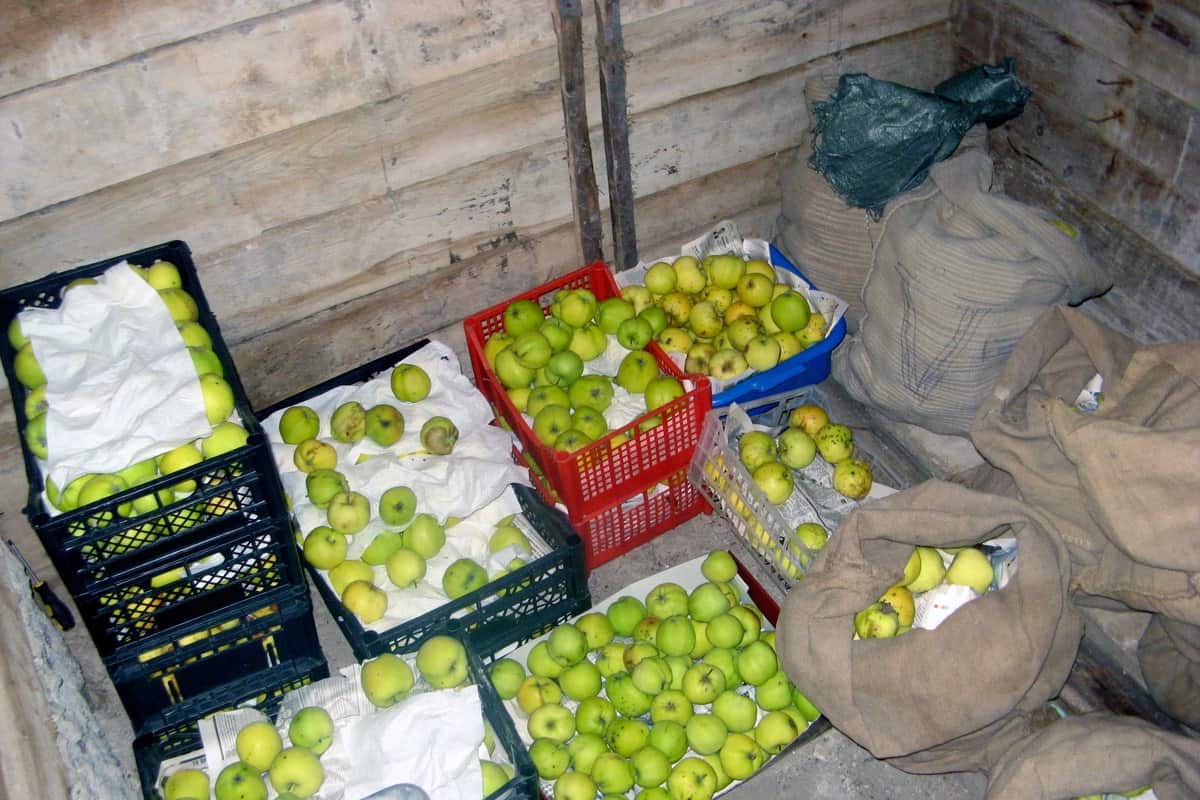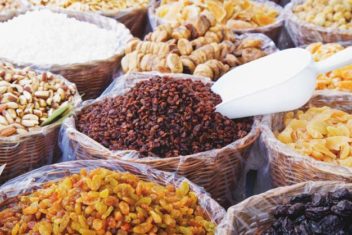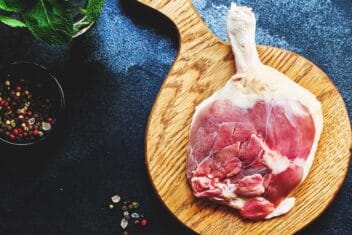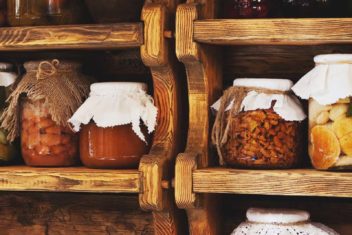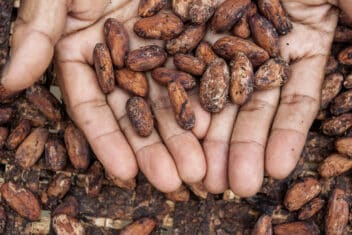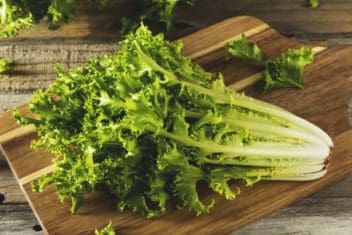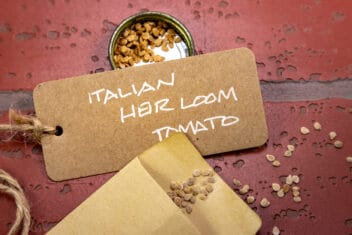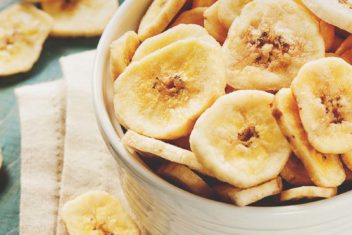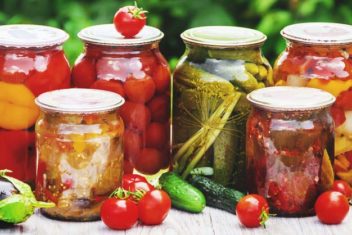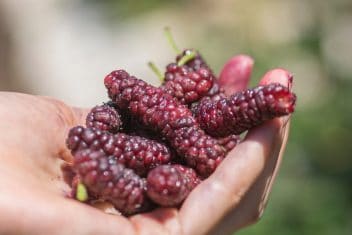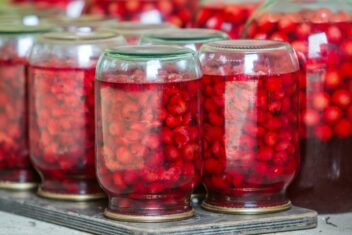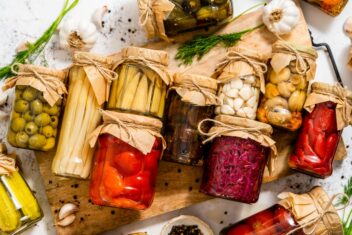A root cellar is a great way to store all kinds of produce. The cool, somewhat moist (yet not too damp) atmosphere helps keep your bounty fresh for longer periods.
There are all kinds of different ways to build and fill your root cellar, but what many people don’t know is that it’s not just vegetables that can be stored here. While the root cellar is the ideal environment for crops like potatoes, winter squashes, and rutabagas, it’s also the perfect place to stash some of your favorite fruits, too.
Although you won’t be storing delicate fruits like strawberries and blackberries here for very long, there are nonetheless all kinds of tasty fruits that can be stashed in the root cellar for a long period.
The result? Freezers and refrigerators that aren’t quite so full – and enough produce to last you all year long.
Let’s take a closer look!
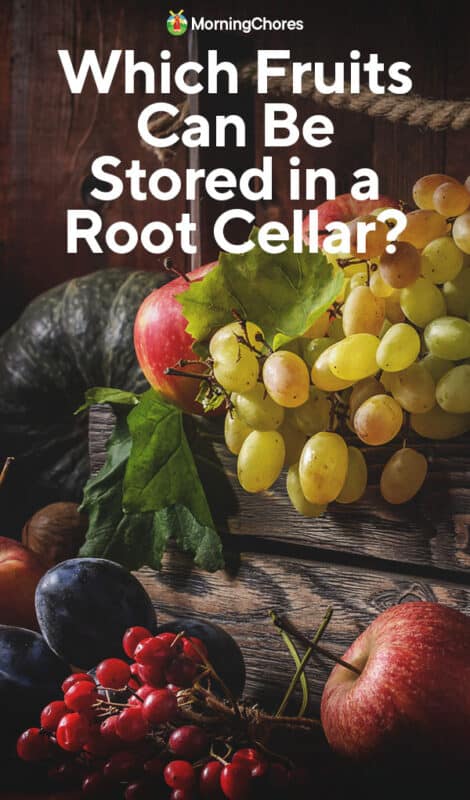
Why Use a Root Cellar for Fruit
If you like to grow your fruit, then you know that eventually, you’ll have too much fruit to keep in your regular kitchen. That’s when a root cellar can come in handy. A root cellar is a great way to store fruits and vegetables long-term.
There are countless reasons to consider using a root cellar. It can extend the life of your produce by several months, allowing you to enjoy the “fruits of your labor” (no pun intended!) all winter long.
It keeps your fruits and vegetables at the perfect temperature and humidity levels, which prevents them from rotting or spoiling.
Even if you don’t grow your fruit, it’s a great way to save money on groceries, because you’ll be able to stock up on fruits and vegetables during their peak season. Because of this, the fruits are often higher in nutrients too.
7 Fruits You Can Store in a Root Cellar
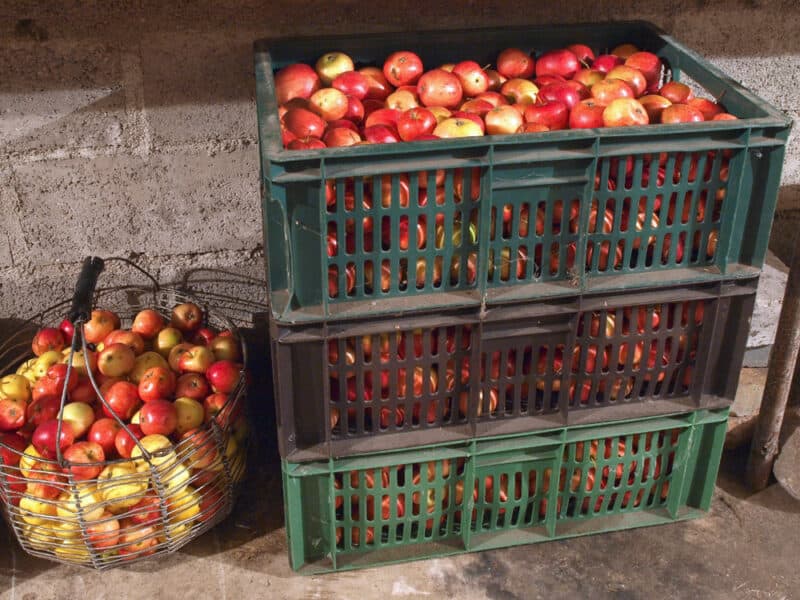
Not sure where to get started when it comes to storing fruit in the root cellar? Here’s a guide to some of the best fruits to keep there.
1. Apples
The apple is the ideal fruit when it comes to long-term storage in a root cellar. It has a tough, hardy nature that makes it perfect for lasting well into the winter months.
According to the University of Missouri Extension, apples should be kept cold and moist and not stored near any other vegetables. The ideal temperature is around 32-40°F (close to what you’d find in your refrigerator) with 80-90% relative humidity.
If you have shelving in your root cellar, keep them on lower shelves and wrap each apple individually in newspaper. Store them in boxes or wooden crates. The storage times vary depending on the variety, with newer ones lasting longer than heirloom varieties.
2. Pears
Like apples, pears also need to be kept cold, at around 33-40°F, and they also need to be stored on lower shelves. They last up to 3 months.
Pears are sensitive to temperature fluctuations and do better at lower temperatures than higher ones. Wrap each one in newspaper and allow them to ripen outside of the root cellar just before you eat them.
3. Tomatoes
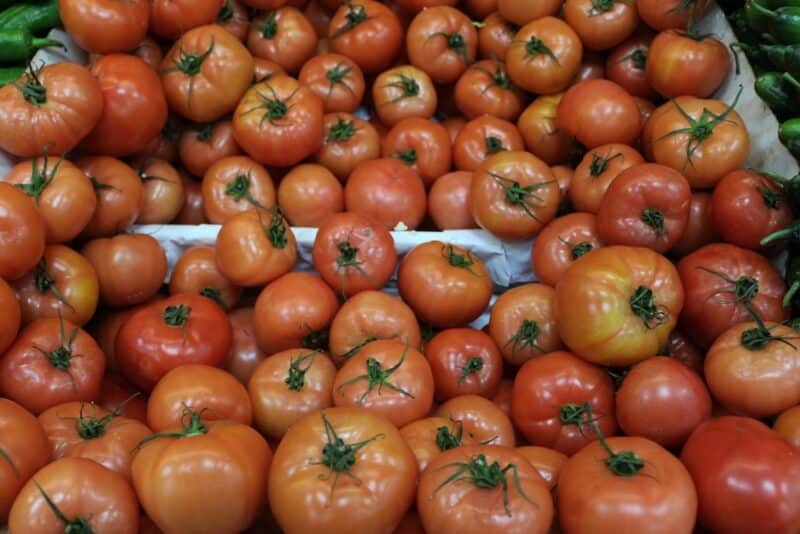
Tomatoes need to stay relatively warm in a root cellar – at around 50°F. The balance here is finicky, though. If they get too cold, they’ll spoil, but if they get too warm and moist, they’ll spoil, too.
The best tip is to store green tomatoes at slightly warmer temperatures – 50° or higher – and allow them to ripen in the root cellar. This will buy you at least another month before they need to be eaten up.
You can also store ripe tomatoes in this fashion but temperatures should be on the cooler side to extend their shelf life. They won’t last as long as green tomatoes. Ripe tomatoes last only a week or so while green tomatoes last up to 2 months.
Some varieties of tomatoes are better suited for winter storage than others. Look for options like Long Keeper Winter Storage, Garden Pech, and Reverend Morrow’s Long Keeper.
4. Tomatillos
Tomatillos can last up to 2 months in a root cellar.
Storing these fruits comes down to knowing when they’re ripe. Verde is ripe when it is green, while Purple becomes purple. Generally, you should stash these fruits in the root cellar after the husk has split. Store them in a basket or paper bag, ideally within the husk.
Purple tomatillos, for the most part, keep better than others.
5. Grapes
When harvesting and storing grapes, keep them cool and moist, at around 32-40°. Grapes keep for a month or sometimes a bit longer in most root cellars.
6. Oranges
In many cases, you can even keep oranges in a root cellar. Just make sure you only store unblemished fruits and keep them at around 80-90% humidity. Oranges will last for around 4-6 weeks.
7. Grapefruit
Grapefruit is one of the few citrus fruits that can be stored in a root cellar (the classic orange listed above is the other option).
These fruits should be kept at 32-40° and with 80-90% humidity. Like oranges, they’ll last up to 6 weeks when properly stored.
Tips for Storing Fruit in the Root Cellar
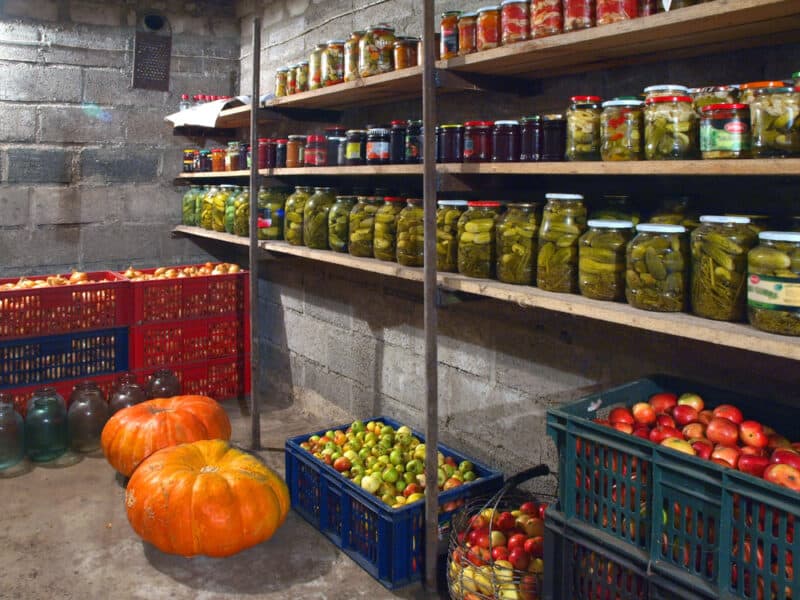
Here are a few tips for storing fruit (as well as many types of vegetables) in your root cellar.
1. Don’t Store Fruits and Veggies Together
Although you can store all kinds of produce in your root cellar, it’s generally considered best practice not to keep fruits too close to vegetables.
The reason for this recommendation is simple. As fruits like pears and apples ripen, they release ethylene gas. This gas can significantly decrease the storage life of many vegetables. You’ll notice the effect sooner with vegetables like potatoes, which can sprout early.
Not only that, but the strong odors of vegetables like cabbage, onions, and turnips can be absorbed by nearby fruits. Therefore, you’ll have to keep these types of produce on opposite ends of the house from each other.
2. Make Sure Nothing Freezes
If your root cellar is so cold that fruit can freeze, it’s not doing you much good. Instead, stash that fruit in the freezer where it belongs.
If you let the fruit freeze, either before or after putting it in your root cellar, the cell structure of the fruit is going to be damaged. This can negatively impact its storage life, making it last less time in storage than you might like.
3. Know That Storage Times Vary
In the list of fruits for the root cellar above, I gave you a few recommendations of fruits to consider storing in your cellar.
However, know that the times given as examples are not absolutes. The storage times vary depending on many different factors.
For example, how ripe was the fruit when you put it into storage? What variety was it? Early-maturing crops generally don’t store as long as late-maturing ones, for the most part.
Not only that, but for some fruits and even vegetables, curing is necessary to extend the shelf life. Some kinds of fruits, when properly cured, will last much longer in storage than they would otherwise.
Finally, know that the condition of the fruit matters when it comes to extending its shelf life. Bruised or otherwise damaged fruits won’t last as long as unblemished, healthy ones that were harvested at the peak of freshness.
Alternatives to a Root Cellar for Food Preservation
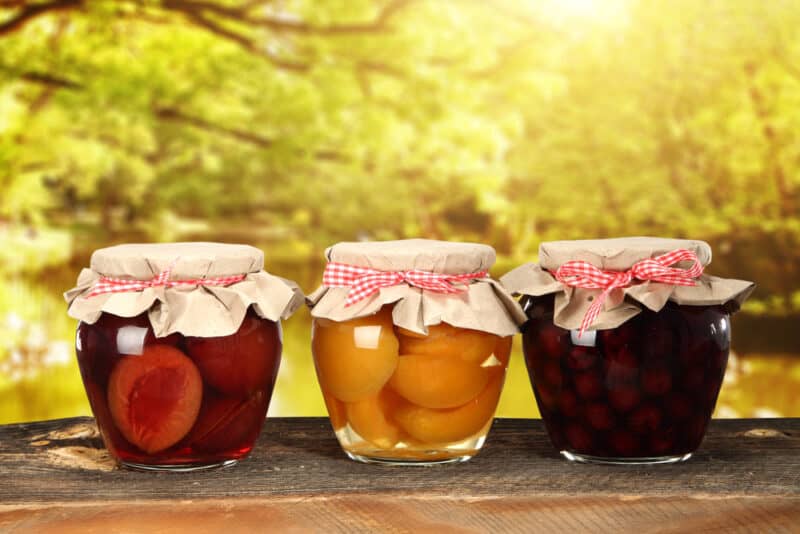
Although there are plenty of fruits you can store in a root cellar, it’s clear to see that not all fruits can be stored here. You’re still missing staples like bananas, lemons, berries, and melons.
Of course, there are alternatives. You can always preserve these other fruits by freezing, canning, or in some cases, fermenting or making jams. Get creative, but don’t be afraid of tapping into the many resources offered by the convenience of a root cellar.
The root cellar was once a staple of rural life, serving as a method of food preservation as well as a storage space for people without electricity and refrigeration.
Today, this tradition is making a comeback, with more people than ever relying on root cellars to live more sustainably while enjoying fresh produce year-round.
Many people assume that fruits aren’t safe to store in a root cellar but the truth is that there are all kinds of fruits that can safely be stashed here – it’s all about finding the right ones.
Follow the tips above and you’ll be able to enjoy your produce at all times. You’ll get maximum results for minimum effort!
